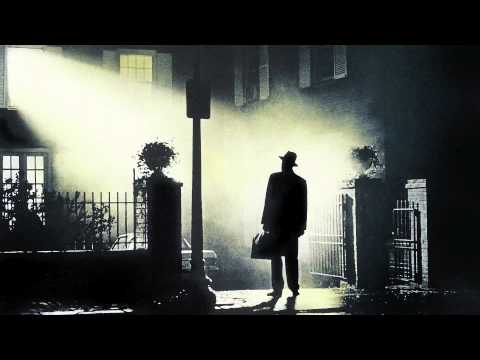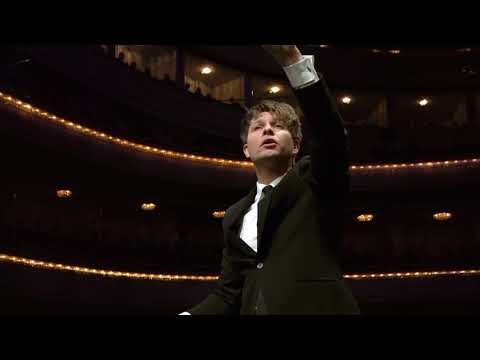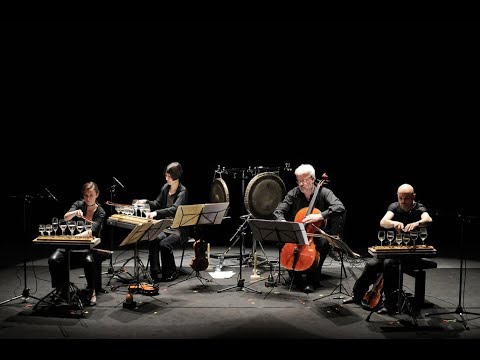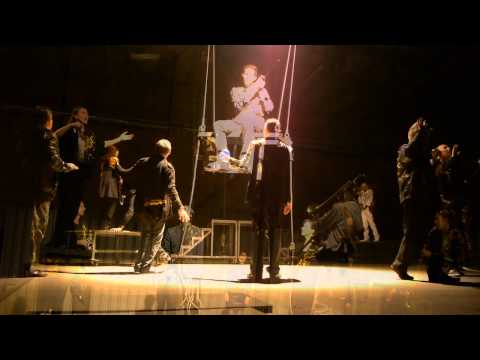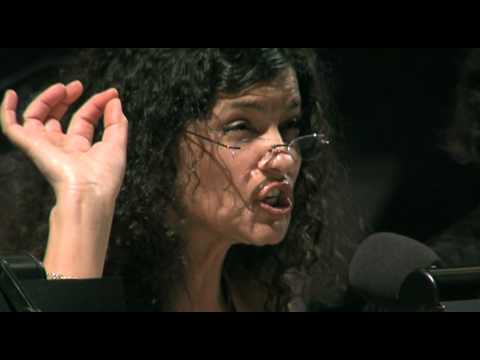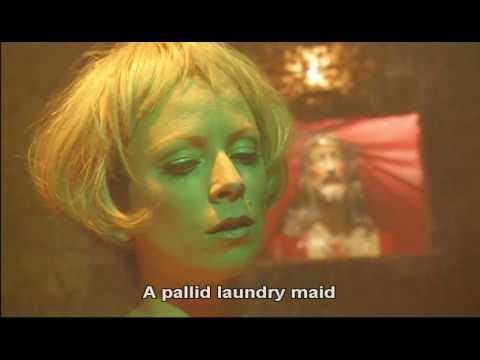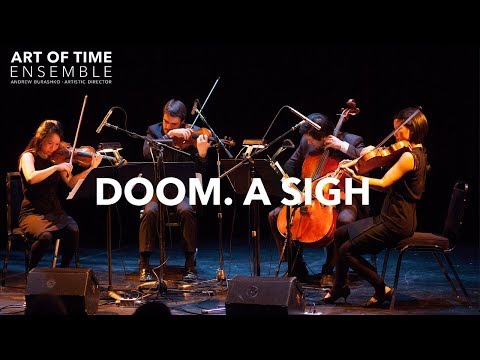Top 10 Most Bizarre Videos
10 Too Terrifying For The Exorcist
Argentine composer Lalo Schifrin, best known for writing the theme to Mission Impossible was asked by William Friedkin to produce the soundtrack for The Exorcist, which he was directing. Schifrin wrote the theme and it was placed in a trailer. However, then the unexpected happened. In his own words: “The people who saw the trailer reacted against the film, because the scenes were heavy and frightening, so most of them went to the toilet to vomit. The trailer was terrific, but the mix of those frightening scenes and my music, which was also a very difficult and heavy score, scared the audiences away.” According to Neil Lerner’s Music in the Horror Film: Listening to Fear, Friedkin had asked Schifrin for a score that “did not sound like music” and which was “tonal and moody.” But it proved too disturbing for the audience to handle and apparently Friedkin threw the score out the window. Listen to the theme above (followed by the more delicate track for the closing titles) but be warned: it starts with a bang.
9 Jack The Ripper, Lesbians, Whores
Whores. Lesbians. Jack the Ripper. These are not things we normally associate with opera. But here we are. Lulu is a superb opera formed in the mind of one of the greatest 20th century composers: Alban Berg. He was a student of the more famous (in general circles at least) Arnold Schoenberg (whose Pierrot Lunaire is below) and he used the same compositional technique: 12 tone rows. In Lulu, Berg surpassed his teacher and fellow member of the Second Viennese School Anton Webern (the first school comprised Mozart and Haydn) in his ability to take the strict rules of serial composition and produce something lyrical. In this, the final scene of his opera (incomplete on his deathbed), the main character Lulu is stabbed to death by Jack the Ripper after she has had sex with him for money, while the disgraced Countess Geschwitz (Lulu’s lesbian lover) looks on in horror. In its day you can imagine the controversy and shock that would have been experienced by a viewing public unused to homosexuality and candid discussions of prostitution and murder. I am excited to say that the Metrpolitan Opera will be staging Lulu next year. Tickets can be found here. I, for one, am hoping to be able to attend. Maybe I’ll see you there!
8 Eerie Repeating Numbers
American composer Philip Glass would be more typically found on a list of beautiful music because his minimalist style is usually quite calming and more “classical” sounding. Here, however, we see a part of his 1976 opera Einstein On The Beach which, as you will see, involves recitation of numbers with seemingly unrelated and random excerpts of text, backed by a mind-numbing track on synthesizer with a choir repeating numbers over and over and over and over . . . In other parts of the opera the singers recite the solfeggi (“do re me”, etc) and a violin takes the place of the main character of Einstein in recognition of his love for the instrument. This is definitely a creepy and disturbing piece of classical music. Here is a more formal staging of the same excerpt from above, and here is a crazy scene in which you can be certain every performer is wearing an earpiece to keep track of where the hell they are in the four and a half hour long performance. This is the first of three operas Glass refers to as his “Portrait trilogy”, the other two cover Mahatma Gandhi and Pharaoh Akhenaten.
7Threnody for the Victims of Hiroshima
When the theme written for The Exorcist by Lalo Schifrin (item 10 above) was rejected, William Friedken settled on a more famous existing piece of music: Threnody For The Victims of Hiroshima by acclaimed Polish composer Krzysztof Penderecki written in 1960. The piece uses tone clusters to produce a sound world rather than the tunes and harmonies we are used to in music. In fact, most of the written score allows the players to actually pick whatever notes they want to play. It is a disturbing and penetrating piece of music long studied in schools as an example of modern classical music. The Threnody was also used during the much-talked-about long scene of a nuclear explosion seen in the Twin Peaks return of 2017. The scene is pretty amazing and you can watch it here. Sadly Krzysztof Penderecki died one month ago of a long illness. Here is further viewing: a video of the master himself conducting his work Polymorphia, also used in The Exorcist.
6 The Banshee
Scritching, scratching, scraping and squeaking are the various noises mostly associated with this bizarre piece of piano music by the very highly regarded American composer Henry Cowell. (Actually those sounds are not atypical for much of Cowell’s work.) This composer was a teacher of John Cage (as was Arnold Schoenberg—see Pierrot Lunaire below) who, in turn, was an inspiration for much of the more avant garde music of pop singer Björk Guðmundsdóttir. Another highly recommended piece by Cowell is The Tides of Manaunaun (written while Cowell was 15!) which you can listen to here. Much of the playing is performed with the entire arm against the whole piano keyboard creating a disturbing sound world. 10 Crazy Sex Products Endorsed By Your Favorite Musicians
5 Black Angels
Black Angels is for electric string quartet and was written by American composer George Crumb in 1971. As you can see in the perforce, a variety of other instruments are involved and played by the various quartet members. These include wine glasses filled with liquids and percussion instruments—skip to 12:57 to hear these being played. It was written during, and in representation of, the Vietnam war and the troubles in the contemporary world. Like Threnody for the Victims of Hiroshima, the piece also appeared on the original soundtrack for the movie The Exorcist (it plays partly through the end credits).
4 Helicopters, Camels, And Trombones
Yes that is a fake camel on the stage. No I don’t know why (I guess they couldn’t train a real camel to do the leg movements!) The music is all over the place, the characters are not all human (the leading man is actually a trombone performer, not a singer), and the third scene involves a string quartet flying around the sky above the opera house in four separate helicopters (yes really). This may not be as frightening as some of the pieces on this list but it is certainly disturbing. Perhaps it is the very sinister notion of helicopters as musical instruments; is that where we, as a society, have come to? That said, as bizarre as it sounds, this performance is a legitimate opera by Karlheinz Stockhausen and is, in fact, just one of the six he completed (one for each day of the week, though he died before writing his seventh). This one is Wednesday From Light, but you may also want to look at Donnerstag Aus Licht (Thursday From Light) which is equally insane and written earlier.
3 Faust: Taken By The Devil
Alfred Schnittke may one day be, to the twentieth century, what Mozart was to the 18th. He wrote enormous amounts of music in a variety of styles but, through all of it, he remained true to a very particular quality: eclecticism. In this piece of music we see the Alto solo in his Faust Cantata – a piece in the same form as the well-known Messiah by Handel in which soloists stand in a line and perform songs between choral pieces. In this cantata we see the perfect example of Schnittke in a nutshell. The outstanding singer (Iva Bittova) belts all over the place, yells, grunts, growls and takes liberties liberally. The orchestra includes unexpected instruments—the most weird being the flexatone played by a soloist beside the singer in this video, but also piano, electric guitars, jazz drums, and organ. And even the choir gets a bizarre modern makeover with directions to whistle at various stages of the composition. This is a superb performance of a stunning piece of music. It is creepy and hellish, and will have you on the edge of your seat for the sheer guttural power of it.
2 Descent Into Insanity
Pierrot Lunaire by Arnold Schoenberg was a groundbreaking piece of chamber music when it was first written in 1912. In the video performance here we see chopped up people, cockroaches crawling around, transvestites, and an insane narrator marching through it all nonchalantly as she descends into madness. Pierrot Lunaire is a chamber music setting of the German translation of poems by Belgian poet Albert Giraud. Be warned: this video contains full frontal nudity. Though Schoenberg pioneered the use of the twelve-tone row in serial composition, this piece is atonal meaning it lacks a harmonic or tonal center but is free from the formal device of serialism, the system for which he ultimate became most famous. His students were equally disturbing in their compositions as evidenced by Lulu above (item 9).
1 Doom, A Sigh
“Doom. A Sigh, is based on two songs that Istvan Marta, a Hungarian composer, recorded during a 1989 visit to Romania. The first, sung by Mrs. Pieter Benedek, 58, evokes her long dead parents, and the second, sung by Mrs. Gergel Imre, 46, recounts the scene of a bloody battle.” For assisting in the making of these recordings, the people involved were fined by the Romanian government and Istvan Marta, the composer, was told, in no uncertain terms by the government, to never return. He didn’t. Words cannot do justice to this mournful and extremely tragic piece. Just listen to it.
+ Magnificently Macabre
I am wrapping the list up with something that is incredibly entertaining to watch but only a touch disturbing (in contrast to the other items on the list). This is a famously difficult piece to perform – for the singer, the orchestra, and most especially the conductor. Yet here we see an amazingly talented Canadian soprano and conductor, Barbara Hannigan, perform Mysteries of the Macabre, taken from the opera Le Grand Macabre (1974–77) by Hungarian composer György Ligeti) singing, acting, AND conducting. This is unheard of and this performance is nothing short of amazing because of it. The raucous standing ovation at the end is well deserved and you can see the toll this piece takes on the performer in Hannigan’s face. 10 Crazy Conspiracy Theories Clouding The Music Industry Read More: Facebook Instagram Email
